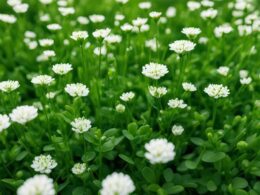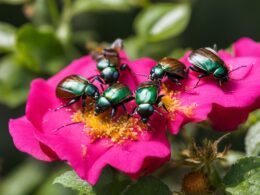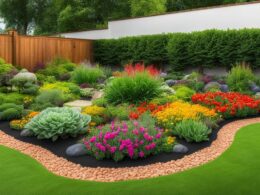Winter may seem like a bleak time for gardening, but there are actually many beautiful flowers that bloom during the colder months. These winter blooms can add a splash of color to your garden and bring cheer even when the weather is cold. From pansies and violas to snowdrops and daffodils, there are plenty of winter flower names to know. Let’s explore a variety of winter flowers that can brighten up your garden during the colder months.
Pansies and Violas
Pansies and violas are two winter flowers that are beloved for their vibrant colors and ability to bloom throughout the winter season, especially in mild climates. These annuals may technically be categorized as “annuals,” but many varieties drop seeds and can reemerge the following spring, providing even more glorious blooms.
With their wide range of colors, including purples, yellows, oranges, and blues, pansies and violas are an excellent choice for introducing a burst of color to your winter garden. Whether you plant them in containers, beds, or borders, these winter flowers will add a lively touch to your outdoor space during the colder months.
Image:
Snowdrops
Snowdrops, also known as galanthus, are delicate droopy-headed flowers that bloom very early in the spring. They must be planted in the fall for a beautiful early spring show. Snowdrops look best at the front of borders or in rock gardens and often start blooming when snow is still on the ground.
Snowdrops, or galanthus, are a stunning early spring flower that adds a touch of enchantment to any garden. These delicate droopy-headed blossoms are known for their pure white color and are often the first flowers to bloom after a long winter. They create a striking contrast against the lingering snow, making them a favorite choice for gardeners looking to inject some early spring beauty into their landscape.
The snowdrop’s small size makes it a perfect fit for the front of borders or rock gardens. Their dainty appearance adds charm and elegance to any garden design. They can be planted in groups or scattered throughout the garden to create a naturalistic effect. Snowdrops thrive in moist, well-drained soil and prefer partial shade. They are relatively low maintenance and can naturalize over time, forming impressive drifts of delicate white blossoms.
To cultivate snowdrops successfully, it is recommended to plant the bulbs in the fall. Find a suitable spot in your garden where they will receive enough sunlight to encourage growth but also some shade to protect them from the intense heat. Dig a small hole, ensuring that the bulb is planted at the correct depth and spacing. Water the bulbs thoroughly after planting and provide regular water during the growing season.
When planting snowdrops at the front of borders or in rock gardens, consider their height and placement. These diminutive flowers can easily get overshadowed by taller plants, so position them strategically to showcase their delicate beauty. Pair them with other early spring flowers like crocuses or primroses to create a captivating display.
Daffodils
Looking to add a pop of color to your garden in the early spring? Look no further than daffodils! These sunny flowers are known for their vibrant yellow petals and are a sure sign that winter is on its way out. Depending on where you live, daffodils can start blooming as early as February, bringing joy and warmth to your outdoor space.
To enjoy the beauty of daffodils in your garden, it’s important to plan ahead. Fall is the perfect time for planting these bulbs, ensuring that they have enough time to establish their roots before the arrival of late winter and spring. By planting daffodils in the fall, you can look forward to a burst of cheerful blooms as the temperatures begin to rise.
Daffodils are incredibly versatile and can thrive in various garden settings. Whether you have a sunny, well-drained area or a partially shaded spot, these delightful flowers will add a touch of sunshine to any corner of your garden. Their bright colors and delicate fragrance make them a favorite amongst garden enthusiasts.
Don’t miss out on the beauty of daffodils in your garden. Plant these sunny flowers in the fall, and come late winter and early spring, you’ll be rewarded with a captivating display of yellow blooms. Embrace the arrival of February with the cheerful presence of daffodils and watch as your garden comes alive with the colors of early spring.
Hellebores
When it comes to adding beauty to your garden in mid to late winter, hellebores are a top choice. Also known as Lenten roses, hellebores bloom around the time of Lent in some climates. These exquisite flowers have a delicate appearance with their soft petals and subtle hues. However, don’t let their delicate appearance fool you. Hellebores are as tough as nails and can withstand the colder winter temperatures.
Whether you live in a region where hellebores bloom in mid or late winter, these stunning flowers will bring a touch of elegance to your garden. Imagine the sight of their delicate blooms peeking through the snow or brightening up a dreary winter landscape. Their resilience and ability to thrive in colder climates make them a reliable addition to any winter garden.
If you’re looking to enhance your garden with a plant that combines a delicate appearance with incredible durability, hellebores are the perfect choice. Their tough nature ensures that they will continue to bring beauty to your garden year after year, even during the harshest winter conditions.
Winterberry
While not technically a flower, the winterberry (also known as deciduous holly) is a must-have for any winter garden. What makes this plant truly special are its bright red berries that adorn the branches during the colder months.
To ensure you have an abundant display of these stunning berries, it’s important to plant both a male and female winterberry. This is because winterberries are dioecious, meaning they have separate male and female plants. The female plants produce the beautiful berries, but they require the pollen from the male plants for successful pollination.
When choosing your winterberries, make sure you have a good balance of male and female plants. A general rule of thumb is to have one male plant for every three to five female plants for optimal pollination and berry production.
What Winter Flower Names Would Make Great White Flowering Ground Cover in My Garden?
Some great winter flower names to use as white flowering ground cover in your garden are snowdrops, white alyssum, and candytuft. These flowers not only add a pop of color to your garden in the colder months but also provide a beautiful white carpet of blooms.
Conclusion
Winter doesn’t have to be a dull season for your garden. By planting winter-blooming flowers like pansies, snowdrops, daffodils, hellebores, and winterberry, you can add a splash of color and beauty to your garden even in the colder months. These winter blooms will brighten up your garden and bring a touch of vibrancy during the winter season.
Despite the chilly weather, a well-planned garden in winter can still be a sight to behold. Imagine stepping outside on a crisp winter morning to be greeted by delicate layers of snow with pops of color from your blooming winter flowers. It’s a breathtaking scene that creates a sense of wonder and appreciation for nature’s resilience.
So, don’t let the winter weather stop you from enjoying the beauty of your garden. Embrace the charm of these delightful winter flower names and create a garden that thrives all year round. Whether it’s the cheerful faces of pansies, the graceful elegance of snowdrops, the sunny blooms of daffodils, the delicate charm of hellebores, or the vibrant berries of winterberry, you can transform your garden into a winter wonderland filled with a dazzling splash of color.











